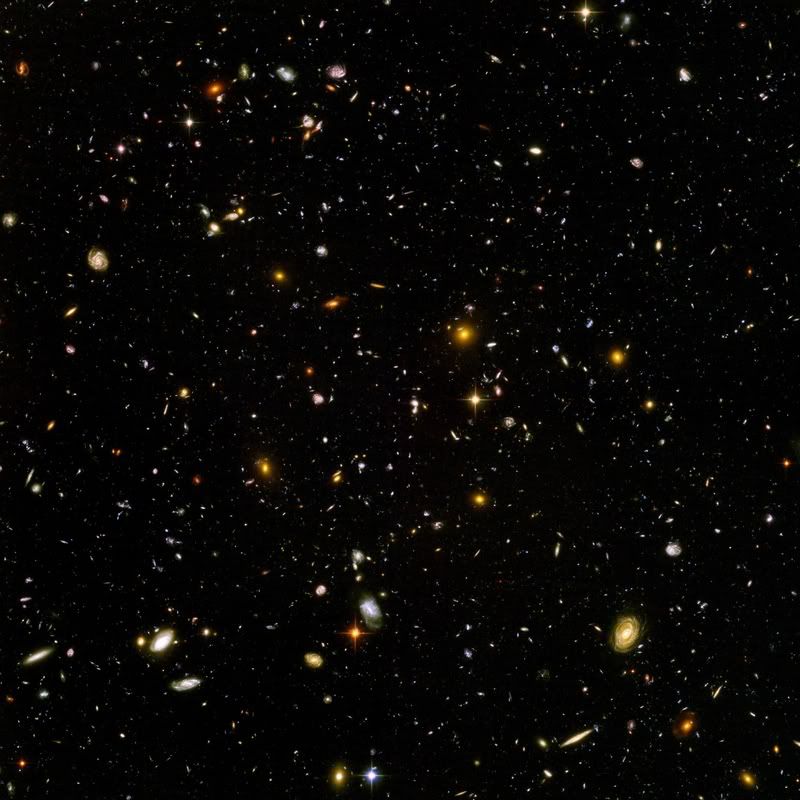
One of the most beautiful (IMHO) pictures ever taken...
(Edited for image size)
Moderators: lilfssister, North Shore, sky's the limit, sepia, Sulako, I WAS Birddog


You are correct Sir.North Shore wrote:I had planned to put this in the "system after system" thread, but decided that it could stand on its own:


Ludacris wrote:5X5, what exactly is it about that photograph that is not explained by science?

I am Birddog wrote: This is the best photo of the only home we have.
Very appropriate, I salute you.

Look again at that dot. That's here. That's home. That's us. On it everyone you love, everyone you know, everyone you ever heard of, every human being who ever was, lived out their lives. The aggregate of our joy and suffering, thousands of confident religions, ideologies, and economic doctrines, every hunter and forager, every hero and coward, every creator and destroyer of civilization, every king and peasant, every young couple in love, every mother and father, hopeful child, inventor and explorer, every teacher of morals, every corrupt politician, every "superstar," every "supreme leader," every saint and sinner in the history of our species lived there – on a mote of dust suspended in a sunbeam.
The Earth is a very small stage in a vast cosmic arena. Think of the rivers of blood spilled by all those generals and emperors so that, in glory and triumph, they could become the momentary masters of a fraction of a dot. Think of the endless cruelties visited by the inhabitants of one corner of this pixel on the scarcely distinguishable inhabitants of some other corner, how frequent their misunderstandings, how eager they are to kill one another, how fervent their hatreds.
Our posturings, our imagined self-importance, the delusion that we have some privileged position in the Universe, are challenged by this point of pale light. Our planet is a lonely speck in the great enveloping cosmic dark. In our obscurity, in all this vastness, there is no hint that help will come from elsewhere to save us from ourselves.
The Earth is the only world known so far to harbor life. There is nowhere else, at least in the near future, to which our species could migrate. Visit, yes. Settle, not yet. Like it or not, for the moment the Earth is where we make our stand.
It has been said that astronomy is a humbling and character-building experience. There is perhaps no better demonstration of the folly of human conceits than this distant image of our tiny world. To me, it underscores our responsibility to deal more kindly with one another, and to preserve and cherish the pale blue dot, the only home we've ever known. -- Carl Sagan


The Hubble Ultra Deep Field, or HUDF, is an image of a small region of space in the constellation Fornax, composited from Hubble Space Telescope data accumulated over a period from September 24, 2003 through January 16, 2004. It is the deepest image of the universe ever taken in visible light, looking back approximately 13 billion years, and it will be used to search for galaxies that existed between 400 and 800 million years after the Big Bang. [1]
The HUDF image was taken in a section of the sky with a low density of bright stars in the near-field, allowing much better viewing of dimmer, more distant objects. The image contains an estimated 10,000 galaxies[2]. Although most of the targets visible in the Hubble image can also be seen at infrared wavelengths by ground-based telescopes, Hubble is the only instrument which can make observations of these distant targets at visible wavelengths.
Located southwest of Orion in the Southern-Hemisphere constellation Fornax at right ascension 3h 32m 40.0s, declination -27° 47' 29" (J2000), the image covers 11.5 square arcminutes. This is just one-tenth the diameter of the full moon as viewed from Earth, smaller than a 1 mm by 1 mm square of paper held 1 meter away, and equal to roughly one thirteen-millionth of the total area of the sky. The image is oriented such that the upper left corner points toward north (-46.4°) on the celestial sphere. The star near the center of the field is USNO-A2.0 0600-01400432 with apparent magnitude of 18.95.
In total, the image required 800 exposures taken over the course of 400 Hubble orbits around Earth. The total amount of exposure time was 11.3 days for the ACS and 4.5 days for the NICMOS.
Never heard of the "god of the gaps"argument? It's widely used by young earth creationists when arguing against evolution (as well as other aspects of science), essentially to argue that any evidence contrary to their claims simply strengthens their claims by leaving more unexplained. If there are no transitional fossils between one species and its ancestor, that helps to disprove evolution, by their argument. If a transitional fossil is found, then that helps to disprove evolution, because there's now a gap between the ancestor and the transitional fossil, as well as a gap between the transitional fossil and the descendant, and two gaps are more than one. Science has a habit of prompting new questions by answering old ones, which is probably a result of how the scientific method works. I have little doubt that many (though not all, or even most) would simply redefine their concept of god to answer those new questions.RFN wrote:We should be careful about attributing things whose causal factors (ie. singularities) we don't yet completely understand to a supernatural power like god.
In that scenario, we leave ourselves open to the disproof of god. Better to leave the idea of god to some nebulous thought that can't be defined, proven, or quantified. Much safer.


Boom de yada, boom de yada, boom de yada, boom de yada
You don't understand time. Do some reading about relativity -what existed prior to the "Big Bang"